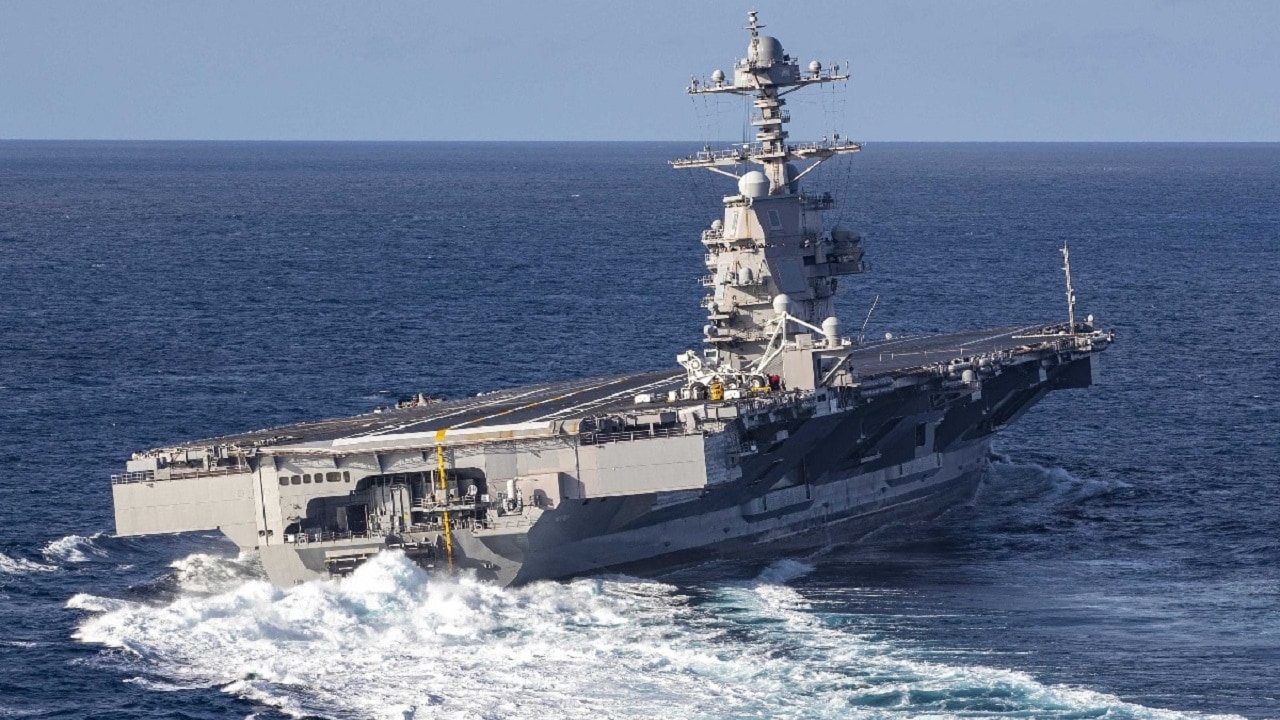Ford-Class, Explained: Following years of delays, cost overruns, and Congressional criticisms, some might be inclined the question the wisdom of the U.S. Navy’s Ford-class carriers, despite the known reality that the new platforms have ushered in a new era in maritime power projection.
Meet the Ford-Class
The Ford-class is afloat after no small amount of challenge. However, upon evaluation, one needs to consider the scope and depth of its accomplishments. Clearly, its shortcomings, failings, and greatest benefits all pertain to the ambitious and ultimately successful effort to introduce many new unprecedented technologies into a platform at the same time.
The project was ambitious. Years later after much duress, the ship is operational with electromagnetic propulsion, breakthrough computer automation, electric weapons elevators, unprecedented on-board electrical power, and of course a much larger deck space to support a higher sortie rate.
If the Navy is to blame in any way for the ship’s problems, one might look at the sheer ambition of the project.
However, the ambition and innovation fundamental to the project is precisely responsible for its current operational success.
What might have seemed catastrophic at the time, may upon subsequent reflection and consideration of the full context, may make much more sense in retrospect years afterward.
While primarily blasted for cost, very few people listened to what many Navy leaders were saying at the time.
The Ford costs included “non-recurring” engineering and developmental costs which will benefit the class and save money for decades throughout the life of the Ford-class.
Costs Were a Factor for Navy
Also, contrary to general perceptions to an extent, the Navy did build the USS Ford with costs in mind, because the increased computer automation lowers the crew by as many as 900 sailors and saves as much as $ 4 billion in costs over the service life of each ship.
There is also the long-term maintenance and sustainment savings associated with the EMALs, or ElectroMagnetic Aircraft Launch System, as it generates much less stress or wear and tear on the airframes than previous technologies. An ability to operate with a higher sortie rate not only better concentrates the lethality and execution of any air attack campaign but also means potential savings as a single ship can perform a larger number of missions.
Electric elevators also greatly improve the sortie rate and reduce costs by virtue of ensuring a smaller number of planes can achieve a given mission by refueling, rearming, and relaunching quickly.
A Powerhouse
With a new class of onboard generators, the Ford-class will operate with three times the electrical power built into existing carriers and a 33 percent higher sortie rate. The most significant element of the Ford’s development, however, can arguably be seen in its “shock trials” performance.
After being subject to many different bombs in many different shapes in 2022, the USS Ford proved itself survivable despite all the ambitious new technologies. The shock trials were quite successful, according to industry and Navy participants.
All this being said, the financial pains and stresses associated with the Ford development might lead one to easily overlook the magnitude of the accomplishment.
Integrating this many new technologies into a single, massive platform is no small achievement, but rather a defining shift in maritime warfare modernization sufficient to inspire historians years from now.
MORE: The F-35 Now Comes in Beast Mode
MORE: Why the U.S. Navy Tried to Sink Their Own Aircraft Carrier
Kris Osborn is the Military Affairs Editor of 19FortyFive and President of Warrior Maven – Center for Military Modernization. Osborn previously served at the Pentagon as a Highly Qualified Expert with the Office of the Assistant Secretary of the Army—Acquisition, Logistics & Technology. Osborn has also worked as an anchor and on-air military specialist at national TV networks. He has appeared as a guest military expert on Fox News, MSNBC, The Military Channel, and The History Channel. He also has a Masters Degree in Comparative Literature from Columbia University

